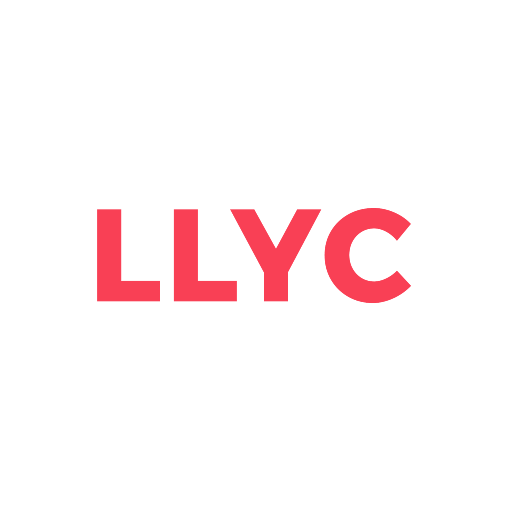LLYC 13 Dec 2019 // 7:53PM GMT

Last 5th November 2019, took place at the LLYC office in Madrid the co-creation workshop “The challenges of talent in the 2020s”, where many HR professionals could participate to identify the challenges for the the 2020s related to the connection with talent. The result? The list of challenges and solutions given below.
“Time seems to flow calmly in these lands, marked by the pace of a landscape of arid beauty and an immovable social order, at the top of which is the landholding aristocracy. But things are about to be shaken up with the arrival of Garibaldi. Don Fabrizio, prince of Salina, an imposing, proud, sensual, lucid man, patriarch of one of the most powerful families on the island, contemplates undaunted these troubled times, which could sink his world, or could bring changes that in fact will allow everything to go on the same...”
So goes the story of Il Gattopardo, Giuseppe
Tomasi di Lampedusa’s first and only novel. He died before he could see it published. At the time, the novel was deemed so controversial that it was hard to find anyone willing to risk publishing it. Il Gattopardo has since become a classic, even getting a movie adaptation and a new Spanish edition, released by the Anagrama publishing house earlier this year.
This novel, which takes place amid the upheaval of the end of the 19th century when the aristocracy lost power to the new bourgeoisie, gave its name to a sociopolitical effect that comes about during uncertain times: The need for an appearance of great change to ensure nothing changes.
As companies work to connect with talent, it seems many are experiencing a “gattopardo effect,” judging by the conclusions sector professionals came to during LLYC’s Nov. 5 workshop in Madrid. We gathered with the goal of getting back to the basics and leaving aside periphery issues that may have distracted us in the past. We wanted to focus on people again.
This reflects the concerns of the professionals responsible for companies’ human capital. Little more than a month before the beginning of the new decade, we have to ask ourselves what challenges we will we face. Will the rules of the game change, or remain similar to how they are now?
In this volatile, uncertain, complex and ambiguous (VUCA) environment, it is getting harder to make accurate predictions. The futures of unstable contexts are especially uncertain, making actions based on predictions risky. Given this premise, we gathered executives from Allen Overy, Amadeus, Gonvarri, Indra, ING, Just Eat, LLYC, Multiópticas, Schindler y VitalDent to reflect on the major challenges that lie ahead when it comes to connecting with talent.
The process starts with understanding today’s employee experience and the concerns that already exist, then using these to analyze the future. Understanding what preoccupies us today allows us to think ahead to what we will need tomorrow. We did this by analyzing the various phases we have seen in companies’ relationships with their professionals. Below are the main conclusions of this analysis, ordered according to an employee’s timeline at a company.
TALENT SEARCH: STOP WAITING FOR THEM TO FIND YOU
The complexity involved in capturing talent has only grown over the years, and it takes up a great deal of HR’s time and focus. Today’s market is characterized by a lack of differentiation between competitors, low number of professionals qualified for hyper-specialized positions, competition from other big-spending companies and a new generation of workers in search of new challenges. How will we approach finding talent in the future?
Employer brand will play a fundamental role in the next decade. Companies will continue to allocate resources to gain a foothold in the war over talent, and some key aspects in this process
will be:
-
Starting to connect during school. Companies usually start their hiring process while new talent is still in university. Think of job fairs, agreements with educational centers and research chairs, not to mention more innovative options like immersion weeks and hackathons. But if we want to build in the long term, we must look at hiring in the long term. In the coming decade, we are likely to see more companies approaching younger students to connect with future talent even before they know what they want do for a living.
-
Making recruitment everyone’s job. The task of recruiting goes beyond the HR department. There are no better ambassadors than a company’s own employees; they are better able to contact people with profiles like their own, they know their sector deeply and they make better recommendations. Why not do more to encourage referral programs?
-
Increasing diversity in profiles. Not all potential candidates are on LinkedIn or likely to attend job fairs. The days of generic hiring strategies are numbered. It is increasingly important to be clear on the types of profiles needed in order to figure out where to find them, which channels to contact them through and how we can adapt company offers to appeal to them.
-
Standing apart and reinforcing employee value proposition. Do we know what makes our company different from the rest? We should, but even if we do, are we advertising it at every possible opportunity to connect with potential employees? Companies will work to reinforce their brand narrative in connection with their purpose and employee value proposition. They will spend less time talking about what they do and more time talking about how they do it.
As employers, we must create companies that talent wants to work for. Our goal is to be so desirable that applicants come to us.
ONBOARDING: THE SHIFT FROM TECHNICAL, FAST ONBOARDING TO CULTURAL, PROGRESSIVE ONBOARDING
Once we have found the right person for the position and invested resources in talking to them, selecting them and hiring them, the company has its time to shine. This is when our value proposition becomes tangible.
-
The beginning of the adventure—not the end. Getting hired should not be the end goal. We will focus our efforts on integrating new employees with one maxim: The happiest time for a new employee should not be their first day. Talent departments must work every day to ensure the employee experience continues to improve.
-
Longer, more complete onboarding. This means a revolution in onboarding. First, stretch it out over time. Consider a year-long process in which managerial involvement is fundamental and subject to the pressures of metrics. We need KPIs to measure whether new employees have successfully integrated.
-
Cultural fit. Focusing on cultural fit can benefit an employee’s integration into the company. Only 30 percent of a new hire’s success will depend on technical fit. This makes it essential to tangibly introduce company culture during onboarding, emphasizing the process of getting to know the company and living with its values before focusing on the small technical details of the job.
GROWING AND CONSOLIDATING: CAREER PLANS, THE CHRONICLE OF A DEATH FORETOLD
If every person is different, why do we strive to offer everyone the same solution? Striking a balance between growth and consolidation will be vital in overcoming some challenges companies are already facing today: Inter-generational connections, incorporating new profiles and the shift to a liquid workforce are all good examples. To address these challenges, the following strategies will be vital:
-
Career customization. We will soon say goodbye to generic career plans, because different people require different solutions. Over the course of their professional lives, people’s priorities change, and companies should be capable of proposing plans to meet new needs on the fly. Why not have 100 percent flexible work days? Why not offer part-time work at specific times? Why not move toward a model that incorporates the benefits of freelancing without losing a connection to the company?
-
A culture of recognition. In the coming decade, companies will start to employ a gratitude policy, acknowledging each employee’s work and dedication to the company. This will allow companies to encourage and reconnect with their talent. As Joaquin Phoenix’s Joker says, “If you believe in me like I believe in you, they’ll remember us.”
-
Long-term learning. The key to effective training lies in thinking ahead. It makes more sense to train people on the skills they will need in the future instead of focusing exclusively on those required in their present position. Companies will begin training people in skills before they need them, preemptively giving them the tools they will need to advance and succeed. These trainings should also reinforce company values and culture.
OUTBOARDING: LEAVING IS AN OPPORTUNITY FOR FEEDBACK ON THE PROCESS
The effort, dedication, and passion put into caring for employees is often lost when they leave. But when an employee departs for a new project, it should be a time of joy in which we acknowledge each other as facilitators of a complete professional career. To do this successfully, companies will consider the following:
• Cultivating an alumni pool. Former employees, if treated properly, make very good ambassadors. They can feed the funnel of incoming staff through their recommendations, which attract new talent to the company. This makes it vital to continue their relationships with the company even after their contracts end.
• Outboarding optimized company processes. Exit interviews are proving to be ideal for improving the employee’s outgoing experience. They are a key tool companies can use to encourage feedback, which can then be used to continuously improve employee experience.
• Humanization. Empathy is key throughout the process, and this is especially true when employees leave. We must stop viewing rotation as a purely negative thing and begin approach the process with transparency and an open-door policy.
When we first organized the IDEAS workshop, we believed that, in talking about the future, we would largely be talking about technology. Instead, we spent three hours talking about people and how to improve their experiences. In short, we believe the greatest challenge in connecting with talent lies in involving the whole organization in especially sensitive processes, such as recruiting, onboarding and offboarding. We must focus on the individual and offer personalized experiences that suit our diverse workforces and people’s changing needs. We must make our corporate values tangible an strengthen company branding. In the coming decade, technology will be both omnipresent and mundane. We will return to talking more about people and less about technology.
This paper was written thanks to professional participation at our “the challenges of talent in the 2020’s” co-creation workshop, held at llyc’s Madrid office on nov. 5, 2019.
LLYC team members Vanessa Álvarez (Talent Engagement Senior Consultant), Alejandro Cerqueira (Talent Engagement Senior Consultant), Víctor Oliva (Talent Engagement Consultant), Mar Navarro (Talent Engagement) and Beatriz Galiano (Talent Engagement) have also participated in the workshop.
María Obispo. Director of the Talent Engagement área
at LLYC in Madrid.
David González Natal. Senior Director of Consumer at
LLYC in Spain.


































.jpg)












